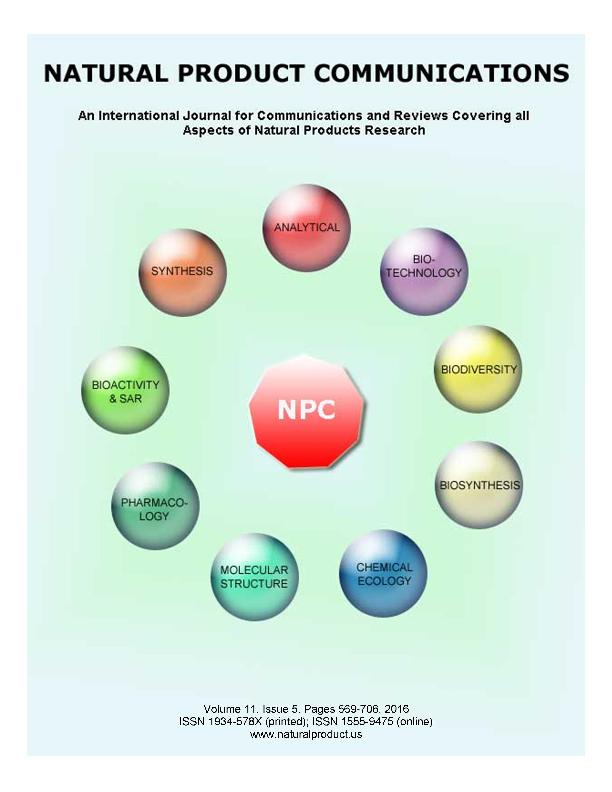Artículo
Determination of botanical origin of propolis from Monte Region of Argentina by histological and chemical methods
Salas, Ana Lilia ; Mercado, Maria Ines
; Mercado, Maria Ines ; Zampini, Iris Catiana
; Zampini, Iris Catiana ; Ponessa, Graciela Ines; Isla, Maria Ines
; Ponessa, Graciela Ines; Isla, Maria Ines
 ; Mercado, Maria Ines
; Mercado, Maria Ines ; Zampini, Iris Catiana
; Zampini, Iris Catiana ; Ponessa, Graciela Ines; Isla, Maria Ines
; Ponessa, Graciela Ines; Isla, Maria Ines
Fecha de publicación:
05/2016
Editorial:
Natural Products
Revista:
Natural Product Communications
ISSN:
1934-578X
e-ISSN:
1555-9475
Idioma:
Inglés
Tipo de recurso:
Artículo publicado
Clasificación temática:
Resumen
Propolis production by honey bees is the result of a selective harvest of exudates from plants in the neighborhood of the hive. This product is used in Argentina as a food supplement and alternative medicine. The aim of this study was to determine the botanical origin of propolis from the arid regions of Monte of Argentina using rapid histochemical techniques and by comparison of TLC and HPLC-DAD chromatographic profiles with extract profiles obtained from Zuccagnia punctata, Larrea divaricata and Larrea cuneifolia, plant species that grow in the study area as a natural community named "jarillal". Microscopical analysis revealed the presence of several Z. Punctata structures, such as multicellular trichomes, leaflets, stems and young leaves. Remarkable was the richness of the propolis in two bioactive chalcones, also present in Z. Punctata resin; these compounds can be regarded as possible markers for propolis identification and justify its use as a dietary supplement, functional food and medicinal product. This study indicates that the source of resin used by honey bees to produce propolis in the Monte region of Argentina is only Z. Punctata, a native shrub widespread in this phytogeographical region, while other more abundant species (L. divaricata and L. cuneifolia) in the region were not found, indicating that this propolis could be defined as a mono-resin, type-Zuccagnia.
Archivos asociados
Licencia
Identificadores
Colecciones
Articulos(CCT - NOA SUR)
Articulos de CTRO.CIENTIFICO TECNOL.CONICET - NOA SUR
Articulos de CTRO.CIENTIFICO TECNOL.CONICET - NOA SUR
Articulos(INQUINOA)
Articulos de INST.DE QUIMICA DEL NOROESTE
Articulos de INST.DE QUIMICA DEL NOROESTE
Citación
Salas, Ana Lilia; Mercado, Maria Ines; Zampini, Iris Catiana; Ponessa, Graciela Ines; Isla, Maria Ines; Determination of botanical origin of propolis from Monte Region of Argentina by histological and chemical methods; Natural Products; Natural Product Communications; 11; 5; 5-2016; 627-630
Compartir
Altmétricas



